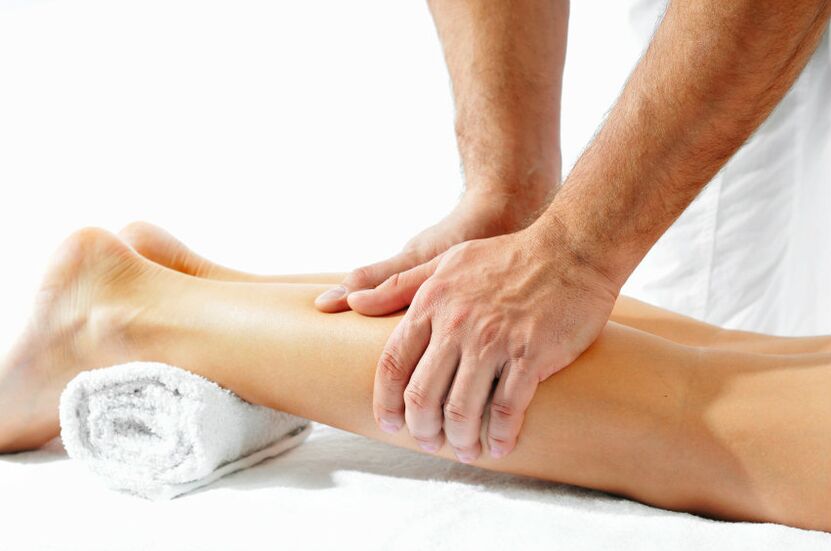
Massage techniques are used in combination to treat medical and aesthetic problems.
The manual effect improves blood flow, relieves edema, relieves tension, however, it has an intense effect on soft tissues, blood vessels, especially large blood vessels. Therefore, varicose veins are conditional contraindications to sessions. Phlebologists are not so categorical: if you follow simple rules, you can even perform procedures with a diagnosis.
Is it possible to have a massage with varicose veins
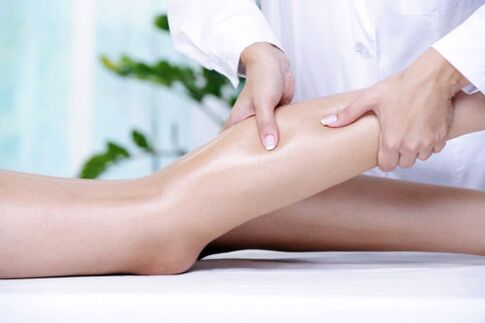
Manual techniques significantly improve the condition of the legs and veins, relieve unpleasant symptoms, and relieve pain that bothers patients. Therefore, proper massage is not only acceptable but also recommended. There is an important condition: exposure is possible in the first and second stages of the disease. There will be no need to consult your doctor.
In one comment!
Regular procedures on the calves and thighs are the best prevention of the development of varicose veins with moderate physical activity.
Alternations of movements, such as pinching, stroking, pressing, rubbing, allow the formation of large vessels, small subcutaneous capillaries. However, some techniques can further dilate the veins in the leg, which is not always desirable. Therefore, the massage can be performed, but only with a specialist who knows exactly how to work with pathological patients.
How It Works
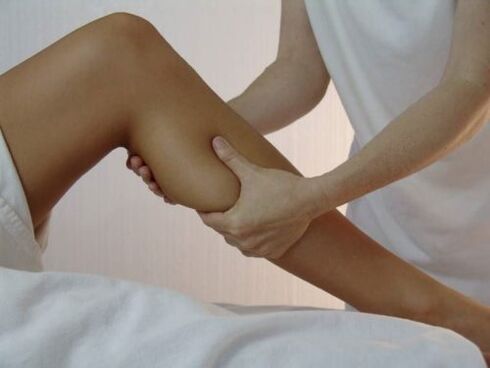
Massage has a complex effect:
- increases lymph outflow;
- accelerates blood flow;
- warms the tissues
- tones the soft tissues, the vessel walls.
The result of the procedure can be so strong that your blood pressure rises temporarily, even with mild dizziness. Therefore, immediately after the procedure relax a little, well-being, important parameters quickly stabilize.
An important measure is to improve the metabolic processes of the tissues, to supply them with blood and oxygen due to the even, rapid warming. In this case, the amount of interstitial fluid decreases to normal. Thus, it is possible to steadily reduce edema, relieve cramps, aggravation and aching pain.
As the size of the tissues decreases, the pressure on the vessels decreases both subcutaneously and deeply. This effect is very detrimental to the walls, contributing to the active development of varicose veins. Reducing limb pressure is an important effect of proper massage.
Therapy can replace physical activity in the early stages of treatment. Active movements increase blood flow, but with pain and swelling it is not easy and not always safe to perform. Therefore, it is worth starting with a massage, gentle effect without active rubbing, bumps, unnecessary pressure. After that, it will be much easier to combine physiotherapy practices.
In one comment!
Massage of varicose veins should not be accompanied by unpleasant sensations that were not present before the procedure. A very gentle blow is required, otherwise injuries and hematomas cannot be avoided.
Types of therapy: what to choose
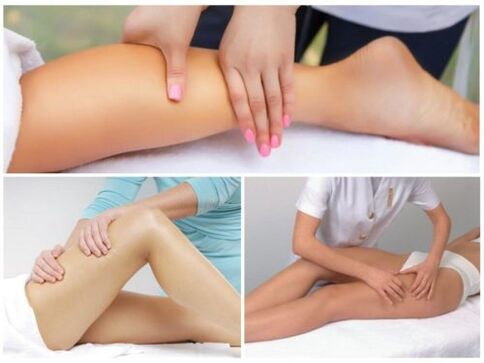
You can use different techniques in the same procedure, but most professionals prefer to work in one direction. To do this, it is important to choose the most effective option. Classical massage does not always bring the desired effect, by choosing modern hardware techniques you can significantly shorten the treatment time without losing progress.
Lymphatic drainage
Lymphatic flow is characterized by the lowest speed, so the master’s actions will be unhurried and precise, which is necessary for varicose veins. This technique is recommended because:
- has a complex effect: reduction of edema, warming;
- allows the whole area to be developed;
- relieves discomfort for a long time.
It is not necessary to use oil even for hand massage. The pressure will be very low, which eliminates any risk of damage to the blood vessels. By selecting hardware technology, noticeable results can be achieved. In this case, the massage is performed even in the second stage of the disease, as the negative effect on the skin does not occur at all and the pressure is precisely controlled.
The simplest lymphatic massage for varicose veins can be done on its own if only the first symptoms have occurred so far and this treatment has been approved by your doctor. Normal hand movements, soft caresses, light grips should be performed along standard lines from bottom to top and from top to bottom. The technique is very simple, so it will not be difficult to master at all. This type of massage is the most beneficial.
Anti-cellulite
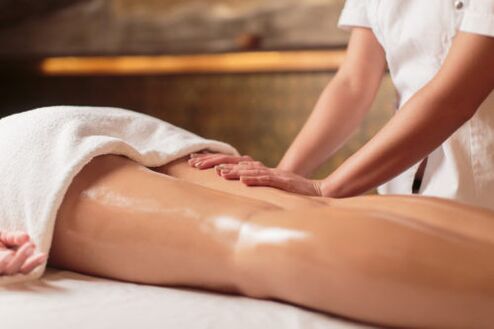
The favorite service of most massage therapists is the treatment of cellulite with warming compounds, honey, special jars, etc. Opinions are divided on the permissible effects of varicose veins. However, advanced doctors and beauticians insist on a "golden mean" and respond that the right technique must be selected and the risks and complications present must be addressed.
It is strictly forbidden to perform anti-cellulite treatment in the presence of thrombophlebitis, ulcers, skin lesions with inflammation and discoloration. You should not use deep techniques that can make a significant quantitative correction after a few times. They are effective but dangerous in diseases of the veins.
In one comment!
Deep stroke techniques can also be manual, so it is a good idea to discuss the type of stroke with the master in advance.
The safest are:
- soft manual techniques;
- hydromassage;
- roller collision.
All vacuum methods must be ruled out, and they can damage the veins and capillaries, accelerating the development of pathology. Soft anti-cellulite massage improves the condition of blood vessels, so it is allowed and even shown to patients.
LPG
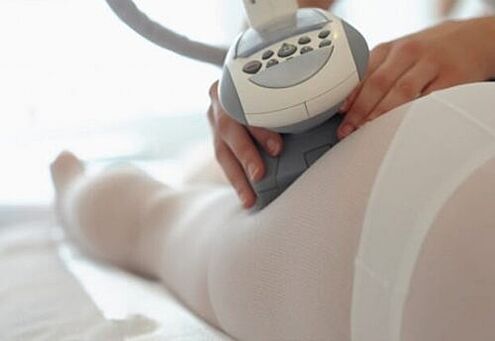
This type of impact on the vacuum system, LPG technology is widely used in the fight against overweight, age-related changes in the contours of the figure. Most experts do not recommend this type of massage in the presence of varicose veins. Even a slight vacuum effect can increase discomfort and new symptoms may occur.
LPG massage is only allowed if the diagnosis has not yet been made, but there are already the first signs of vascular damage. The vacuum effect relieves fluid stagnation and swelling, but has no other positive effect.
Restrictions
Massage should be excluded for any complication of the disease, the most dangerous of which are:
- thrombophlebitis;
- venous hypertrophy;
- elevated temperature;
- trophic ulcers.
Varicose veins often develop underlying other pathologies, such as cardiovascular disease, chronic infections, high blood pressure, and problems with the blood supply to the limbs and brain. In these cases, it is better to exclude the massage.
It is strictly forbidden to affect the legs with any massage movements if the disease has progressed to stages 3 and 4. Such procedures can have negative consequences, all the way to the separation of blood clots and subcutaneous bleeding.
Side effects
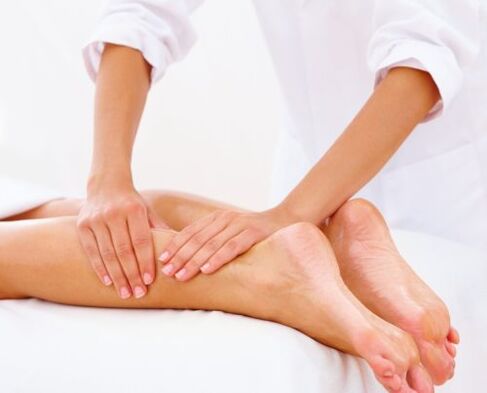
If the type of massage is chosen correctly, there will be no pronounced side effects. It is important to ensure that there are no bruises or redness on the skin of the affected limbs after the procedure that will not go away for a long time. In the case of varicose veins, such phenomena indicate overly aggressive exposure.
The most common side effects are feeling tired, drowsy, and lack of energy. This is due to active lymphatic outflow, muscle relaxation, and tissue oxygen saturation. Therefore, you should lie down or sit down for a while, do not drive immediately, do not rush out of the massage therapist’s office, and do not start active physical work immediately.
In the background of long seats, the temperature may rise slightly. Warming up the tissues is a natural process, but you should definitely see a doctor. After that, mild dizziness may occur when getting up from the couch. The main cause of this phenomenon is active blood flow in the lower body. It’s worth worrying about if the feeling doesn’t go away within 10-15 minutes.
In one comment!
After the massage, you need to get up gradually: rise to your elbows, sit down, lower your legs and only then take a vertical position.
Massage of varicose veins is not only not contraindicated but also desirable when it comes to the first and second stages of pathology development. The best choice would be a manual or hardware lymphatic drainage procedure. The mild effect reduces the severity of symptoms and improves the condition of the tissues. A noticeable effect can be achieved with 10-15 day courses with a 2-3 month break.












































